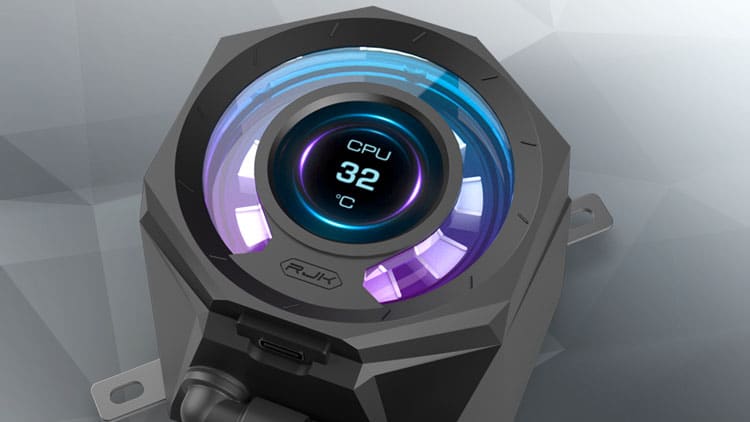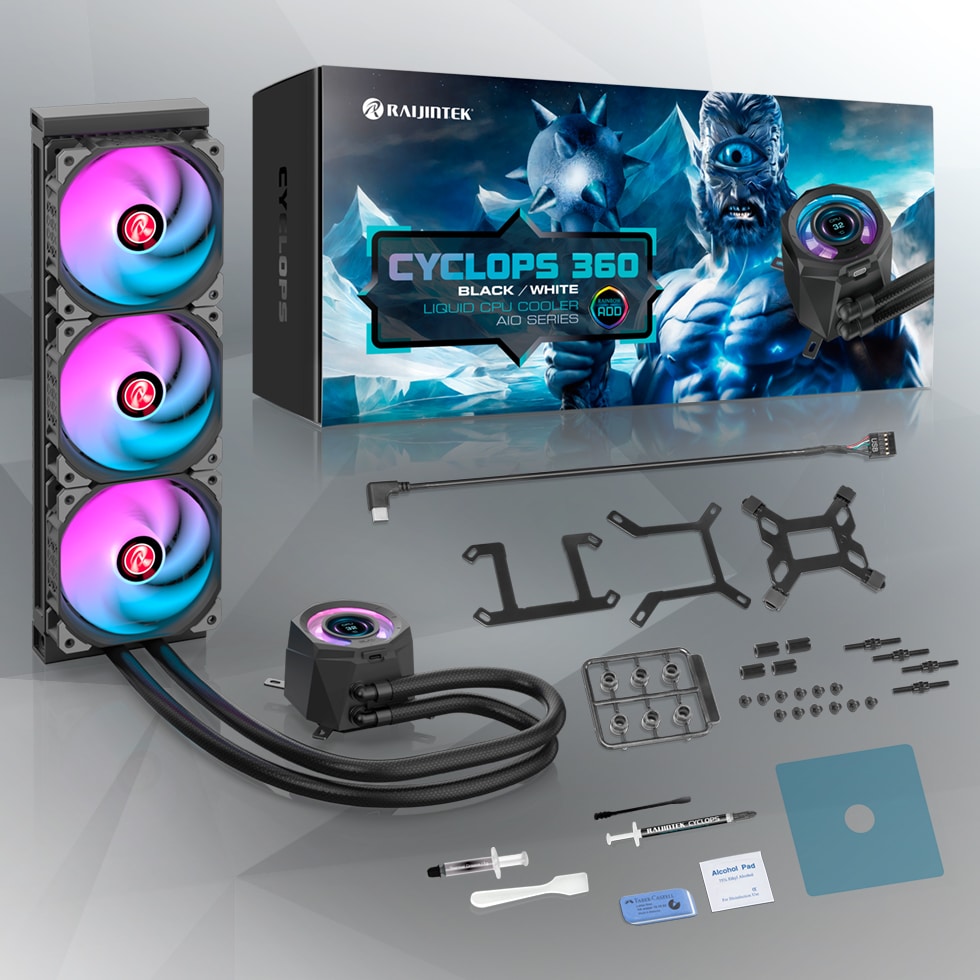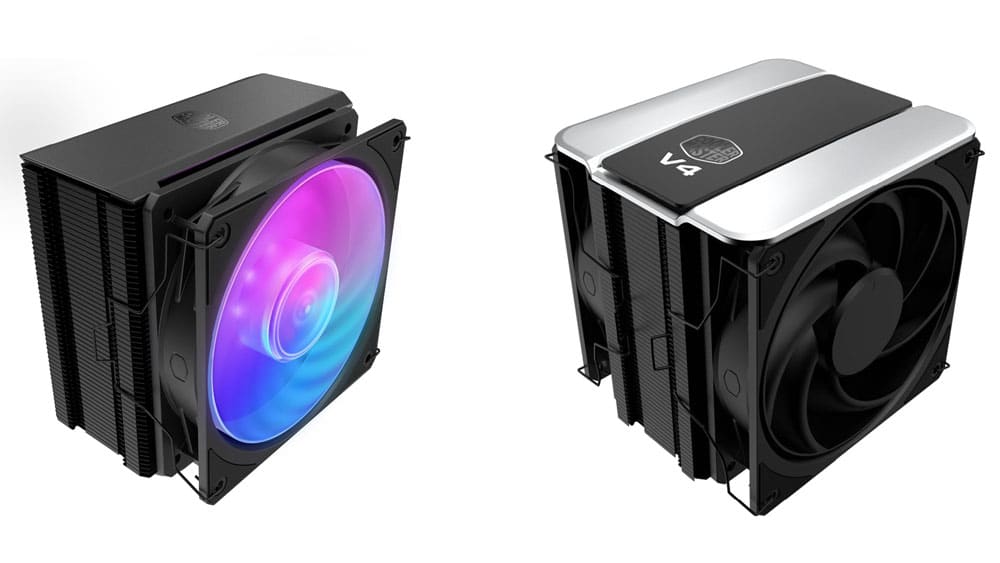Epilogue
The Cyclops 360 comes at a very good price ($105 excluding VAT in the US market), which becomes even better if you realize that in the bundle, you get a liquid metal tube, an LCD screen on the block, and software that needs time and money to develop. All in all, it is a decent product for its money. Still, if you are after top performance, you must either use the provided liquid metal, which will lower the temperatures by 2-3 degrees, or buy a stronger cooling solution.
At 20 dBA and 25 dBA normalized noise output, the Cyclops 360’s performance is decent for AIO standards on Intel sockets, but as the fan speed gets higher, performance doesn’t follow. The Cyclops 360 doesn’t perform well on AMD systems, given its specs. An offset mounting system would help deliver higher performance on AMD platforms and wouldn’t increase production costs.
All in all, the Cyclops 360mm AIO’s most vital asset is its low price, along with the rich bundle, the provided software, and the LCD screen, features typically found in notably more expensive AIOs. If you are after top performance, especially on AMD platforms, there are better but more expensive choices.
If you are searching for fans for your AIO or chassis, read my Best Cooling Fans article before investing in new cooling solutions. You help me a lot by using my affiliate links, which don’t increase the product’s price. I get a commission from Amazon every time you do it, which can make a difference for me, especially now that I am on my own, working exclusively for my media and not for someone else.
- Good price
- Decent performance on Intel sockets at low fan speeds (20 and 25 dBA noise output)
- Can handle >300W TDP Intel processors
- Good enough build quality
- Straightforward installation
- Compatible with all popular (and not) CPU sockets
- LCD screen, controlled by the provided software
- Liquid metal kit included in the bundle
- Mediocre performance on AMD sockets
- It would be ideal if only a single cable connected all three fans (including the ARGB signal)




